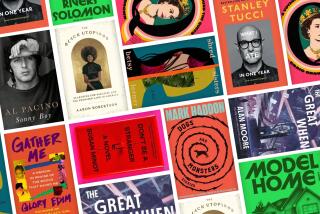Reviewed: ‘Bodies’ by Susie Orbach; ‘Script and Scribble’ by Kitty Burns Florey; ‘My Mother Never Dies,’ by Claire Castillon translated from the French by Alison Anderson
Bodies
Susie Orbach
Picador: 216 pp., $14 paper
We are even more obsessed with the perfection of the physical self than we were when British psychotherapist Susie Orbach’s 1978 classic “Fat Is a Feminist Issue,” was published. These days, she writes in “Bodies,” mothers transfer their body-related anxieties to their children, creating a vulnerability that can erupt in adulthood as self-hatred and feelings of inadequacy. Our bodies no longer make things, she writes; rather, we make and remake our bodies according to an increasingly unrealistic set of media-driven criteria. Our bodies have become objects “to be honed and worked on.” The result is instability, fretfulness, suffering and disorder.
Bodies have always been shaped by culture; there is no such thing as a “natural body.” But we may be the last generation, she writes, “to inhabit bodies which are familiar to us.”
--
Script and Scribble
The Rise and Fall of Handwriting
Kitty Burns Florey
Melville House: 190 pp., $22.95
In many schools today, Kitty Burns Florey reports, children learn “keyboarding” instead of handwriting. Could it be that handwriting is no longer a necessary skill? Florey, whose book “Sister Bernadette’s Barking Dog: The Quirky History and Lost Art of Diagramming Sentences” is a personal favorite, here examines the history of handwriting and handwriting analysis and tries to imagine a world without this form of self-expression. “I used to change my handwriting the way I changed my hair color,” she writes of her early education in parochial school. “The glory days of elegant handwriting have long been over,” she adds, wondering whether the day is coming when “no one will be able to read handwriting at all.”
Florey takes us back to the fourth millennium BC, to the Sumerians drawing pictures on wet clay. She examines the tools of the trade: the calamus (cut from a reed for writing on papyrus), the quill, the pencil, the fountain pen. She describes the golden age when good penmanship meant good character; the Palmer Method and its demise. Foley is no Luddite, but she warns against giving up on handwriting. One day, “our dwindling natural resources may force us to depend on computers less, rather than more.”
--
My Mother Never Dies
Stories
Claire Castillon, translated from the French by Alison Anderson
Houghton Mifflin Harcourt: 164 pp., $21
These 19 stories drill deep holes in that most sticky, shame-shriveled, hypocrite-creating relationship -- the mother-daughter bond. It’s a hall of mirrors: A daughter listing all the things that disgust her about her invalid mother only reveals her dependence. A woman judging her mother’s love affair reveals her own insecurities. A mother who tries too hard to be friends with her daughter reveals an unfinished adolescence. They scrutinize each other, parents and children, in these stories. “I watched her as she crossed the street, distraught, holding the two sides of her coat together, as if she doesn’t want to let herself escape, that vibrant, powerful fear in her guts.” The stories fly by, all familiar, all harrowing. They gnaw at the surface of a thousand unavoidable dilemmas.
--
More to Read
Sign up for our Book Club newsletter
Get the latest news, events and more from the Los Angeles Times Book Club, and help us get L.A. reading and talking.
You may occasionally receive promotional content from the Los Angeles Times.







